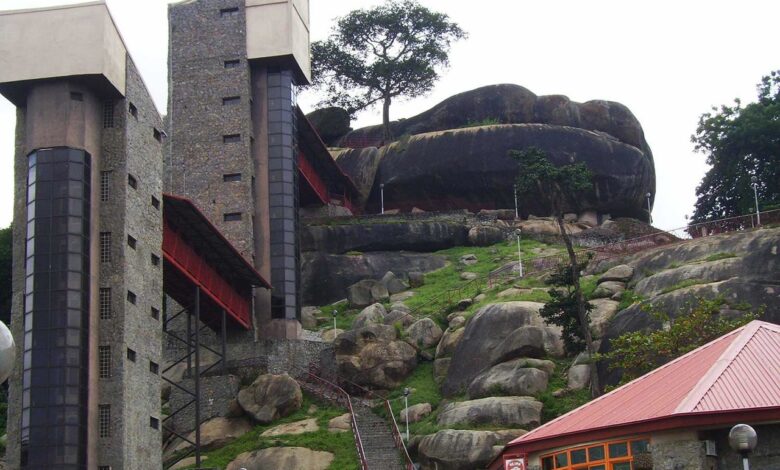Famous Landmarks in Nigeria

Nigeria, a nation of rich cultural diversity and historical significance, boasts a variety of landmarks that embody its heritage and development. From natural wonders to architectural marvels, these landmarks offer insights into Nigeria’s past and present. Here’s a look at some of the most famous landmarks across the country.
1. Aso Rock
Aso Rock is a massive, solitary rock formation located in Abuja, Nigeria’s capital city. Standing at about 400 meters above the surrounding terrain, it is a striking natural feature and a symbol of Nigeria’s political landscape. The rock overlooks key government buildings, including the Presidential Complex, the National Assembly, and the Supreme Court, making it a central piece of Nigeria’s governance and a popular spot for tourists.
2. Olumo Rock
Situated in Abeokuta, Ogun State, Olumo Rock is both a natural wonder and a historical site. The granite rock served as a fortress for the Egba people during the 19th-century wars. Visitors can climb the rock and enjoy breathtaking views of Abeokuta, while learning about the rich history and traditional significance of the site. It remains a symbol of resilience and cultural heritage for the Egba people.
3. Zuma Rock
Zuma Rock, located near Nigeria’s capital, Abuja, is often referred to as the “Gateway to Abuja.” This impressive monolith rises dramatically from the landscape and is notable for its unique natural formation, which some believe resembles a human face. Zuma Rock is not only a natural landmark but also a site of cultural significance for local communities, often featured in traditional folklore and ceremonies.
4. The National Arts Theatre
In Lagos, the National Arts Theatre is a prominent landmark known for its unique architectural design and cultural importance. Completed in 1976, its distinctive shape—resembling a military hat or a traditional African drum—makes it an iconic structure. The theatre is a hub for Nigeria’s arts scene, hosting performances, exhibitions, and cultural events that celebrate the nation’s artistic talents.
5. Badagry Slave Route
Badagry, a coastal town in Lagos State, is renowned for its historical significance related to the transatlantic slave trade. The Badagry Slave Route includes several important sites, such as the Badagry Slave Museum, the Point of No Return, and the Agia Tree. These landmarks serve as poignant reminders of the impact of the slave trade on Nigeria and its role in African history.
6. Nigerian National Museum
Located in Lagos, the Nigerian National Museum is a treasure trove of artifacts and exhibits that chronicle Nigeria’s diverse cultures and history. The museum houses a vast collection of archaeological finds, traditional crafts, and historical artifacts, including the famous Benin Bronzes. It serves as an essential resource for understanding Nigeria’s rich heritage and historical development.
7. The Ogbunike Caves
Found in Anambra State, the Ogbunike Caves are a series of limestone caves with significant historical and cultural value. These caves have been used for centuries by local communities for various rituals and are considered sacred by the indigenous people. They offer visitors a chance to explore natural formations and delve into the local folklore associated with the caves.
Nigeria’s landmarks are more than just physical structures; they are embodiments of the country’s rich history, culture, and natural beauty. From the towering Aso Rock to the historically significant sites in Badagry, these landmarks provide valuable insights into Nigeria’s past and present. Exploring these landmarks offers a deeper appreciation of Nigeria’s diverse heritage and its journey through time.




